Dellingr Satellite
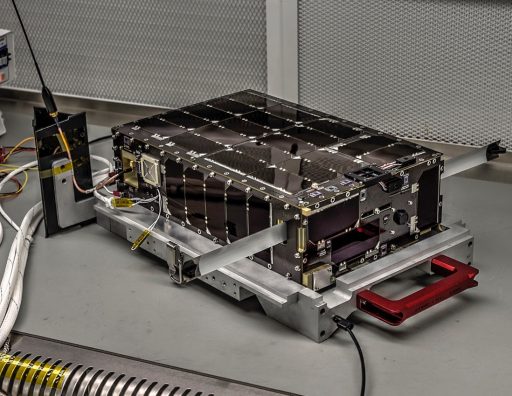
Dellingr is a 6U CubeSat developed at NASA’s Goddard Spaceflight Center as a new state-of-the-art small satellite platform capable of hosting NASA-class science missions and technology demonstrations at a fraction of the cost of present-day programs. The mission’s name comes from the god of dawn in Norse mythology and has been chosen for the satellite’s payloads that are focused on heliocentric research.
CubeSats have become an integral part of in-space research and operational applications, taking a much broader role than originally envisioned when the standardized satellite form factors were inaugurated in 2003, primarily as an educational platform to allow academia cost-effective access to space. With continuing advances in technology, many spaceborne sensors and satellite components were miniaturized to fit into the constrained volume of a CubeSat, allowing the small satellite platforms to be used for various technology demonstrations, science missions and operational missions like rapid-revisit Earth-imaging, space weather measurements, ship & aeronautical tracking and meteorology.
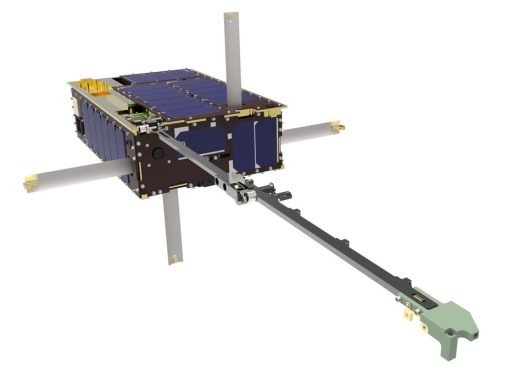
The small size and low weight of CubeSats allows them to be launched cost-effectively and mass production can further reduce costs – allowing large operational constellations to be deployed to realize responsive Earth-remote sensing systems as well as global ship & aircraft tracking, multi-point atmospheric measurements and worldwide communications.
Dellingr was developed by a fairly small team of engineers and scientists at NASA Goddard to create a platform for agency-class science investigations and technology demonstrations at a lower cost. The project fills an acute need for a cost-effective platform that allows space science to be conducted despite flat science budgets. The 6U form factor was chosen in a compromise between launch cost and volume/mass considerations for potential science payloads – a 3U solution was considered but the larger 6U design was favored for its larger payload volume, higher power budget and increased reliability through redundancies possible within the larger platform.
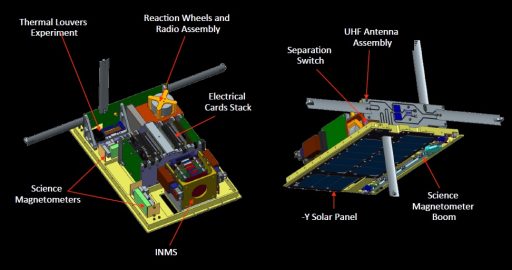
The Dellingr satellite – 30 x 20 x 10 centimeters in size – was designed from a clean sheet and is largely based on Commercial Off The Shelf (COTS) components to keep costs down. However, in the process of developing the satellite platform, it became clear that COTS components oftentimes do not work together as advertised, requiring additional engineering effort and driving up costs. Nevertheless, Dellingr represents an adaptable platform suitable for a number of applications to achieve compelling science on a limited budget. The satellite platform provides sufficient power margin for a variety of instruments and the craft’s attitude determination and control system provides precise pointing and stability needed by Earth-remote-sensing missions as well as astrophysics payloads.
The overall service life of the Goddard Modular SmallSat Architecture platform is six months in diverse mission environments from Low Earth Orbit to lunar and planetary missions with additional modifications possible to lengthen the satellite’s operational life.
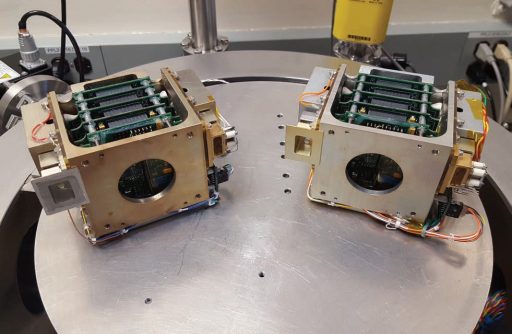
The Dellingr mission is carrying two scientific instruments – the Ion and Neutral Mass Spectrometer (INMS) and a Three-Axis Science Magnetometer – plus several technology demonstrations looking at deployment mechanisms for CubeSats, thermal control systems and attitude sensors.
The Dellingr INMS is an improved version of the instrument flown on the ExoCube mission, dedicated to in-situ measurements of atmospheric neutral and ion composition and density for studies of the dynamic ionosphere-thermosphere-mesosphere system and as a baseline measurement of the steady state background as a function of altitude. INMS delivers simultaneous measurements of the neutral and ion environment at energies of 0 to 50 electron-volts with particular focus on atoms and ions of Hydrogen, Helium, Nitrogen, Oxygen, and NO+.
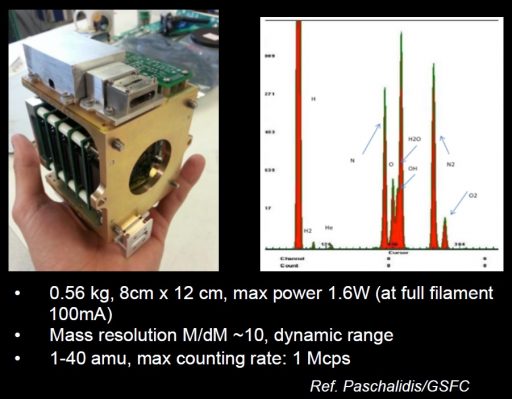
Operating for an extended period of time, INMS will reveal spatial and temporal variability of the abundance of these species including diurnal and seasonal variability. The satellite will study charge exchange processes, and atmospheric response to geomagnetic storms to improve atmospheric models.
The Dellingr INMS – if successful – is the first craft to make in-situ measurements of Hydrogen in this particular exospheric region and the first to keep tabs on Oxygen and Helium since measurements made in the early 1980s. Earth-based observatories that measure atmospheric composition at the given altitudes will help in the validation of ground-based observations and lead to potential improvements for data retrieval algorithms from interferometric and photometric measurements.
The INMS instrument comprises front end optics, a post acceleration stage, a gated time of flight Electrostatic Analyzer (ESA), a Channel Electron Multiplier (CEM) and Micro Channel Plate (MCP) detectors – combining several detection methods into a compact instrument.
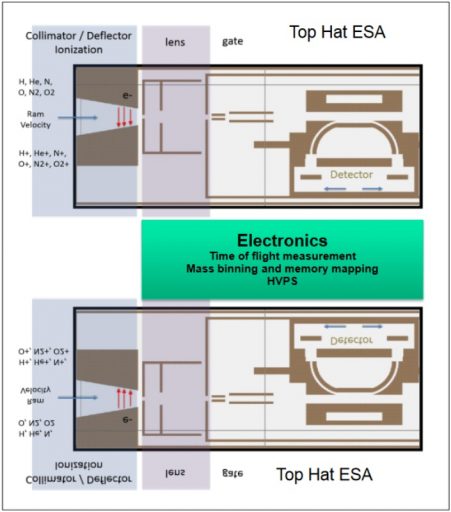
INMS is 1.3 CubeSat Units (8 x 13 cm) in size, weighs 570 grams and requires only 1.8 Watts of power – making it suitable for CubeSats of 3U and above. Despite its small size, INMS can deliver NASA-class science data – the instrument has a high dynamic range of 0.1 to 50 eV, a high mass range of 1 to 40 atomic mass units, a high mass resolution, and a sharp time resolution of 0.1 second enabling an assessment of spatial composition variations.
INMS has a dual symmetric configuration with the ion and neutral sensor heads on opposite sides of the instrument and an electronics assembly in the center. The front end optics on the neutral side include emission ionization and ion blocking grids while the ion instrument features charged grids for spacecraft potential compensation. The individual analyzers use electrostatic accelerators and Micro-Channel Plate detectors with the differences in between the instruments being ion, neutral or no repeller systems. The detectors have a field of view of around 20 x 10 degrees around the spacecraft ram direction.
Both instruments make use of a Top Hat Electrostatic Analyzer – on the neutral side, ions are blocked by a retarding potential grid and neutrals, once passing the collimator are ionized using free electrons. From there, both instruments are identical with ions going through pre-acceleration in an electric field so that all have the same energy before passing through a time-of-flight spectrometer which determines the velocity of each particle, leaving only one unknown in the equation E=0.5mv² which allows their mass to be calculated.
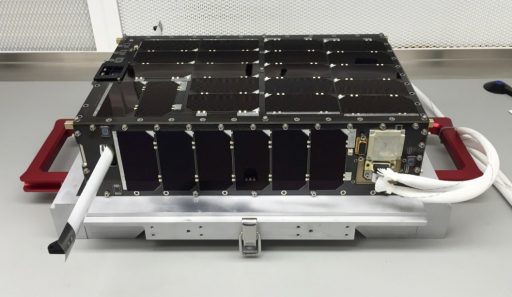
The accelerated ions are focused through an electric gate into the ESA (Electrostatic Analyzer) which sets the start pulse for the time-of-flight measurement and the Channel Electron Multiplier (CEM) provides the end pulse. ESA uses two concentric hemispheres with bias voltages creating only a narrow energy passband including the pre-acceleration voltage but blocking out any out-of-band particles and UV photons. Data delivered by INMS represents time-of-flight spectra with 400 mass bins.
INMS can be operated in a burst mode, taking frames at a frequency of 10 milliseconds which corresponds to an extremely high spatial resolution of 80 meters for the study of highly localized phenomena; the sampling rate can be set at 10ms steps with a maximum of ten seconds.
The INMS instrument realizes the first in-situ measurement of global atomic hydrogen density in the thermosphere and exosphere, also closing a three-decade gap for in-situ atomic Oxygen measurements.
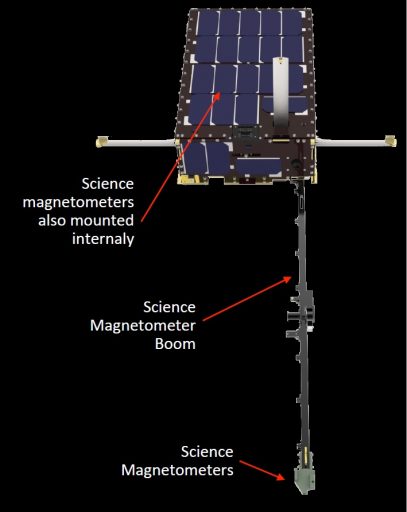
The INMS electronics suite comprises a front-end system, fast gating, High Voltage Power Supply (HVPS), ionizer, Time of Flight (TOF) binning, and a full bi-directional Command and Data Handling (C&DH) digital chain.
In addition to INMS, Dellingr hosts another in-situ suite consisting of three fluxgate magnetometers – an external magnetometer for measurements of magnetic properties in near-Earth space, and two internal magnetometers that test new software algorithms which could be the answer to removing magnetic interference by a spacecraft’s own electronics which had been a major factor for scientific magnetometer suites to date.
The traditional approach used for virtually all science magnetometers to date was to place the sensors on long booms to place them as far away from the spacecraft’s magnetic field as possible. Through advances in sensor technology and software, it is now possible to remove spacecraft interference from magnetometers embedded within the spacecraft body, thereby reducing complexity and cost by removing the magnetometer boom which typically represents a deployable structure that comes with inherent complexity and testing needs. Flying a boom-mounted and two internal magnetometers will provide an opportunity for testing the capabilities of the software scrubbing approach by comparing the software-generated solution with what is considered a pristine measurement from the boom magnetometer.
The science magnetometers are miniaturized fluxgate sensors with a resolution better than 0.1 nano-Tesla at a sampling rate of 3.5 Hz. The magnetometer boom is held against one of the long spacecraft sides for launch and deploys via a shoulder and elbow hinge to position the magnetometer 76 centimeters from the spacecraft body. In addition to the technical demonstration of the software algorithm, the magnetometer is also used to provide complementary science data to put the particle measurements from INMS into magnetic context.
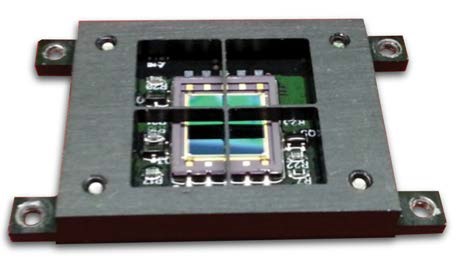
Three technology demonstration payloads are also part of Dellingr, a Fine Sun Sensor developed at NASA Goddard for CubeSat missions, thermal louvers that could be a solution for future CubeSat thermal control systems, and new deployment actuators for CubeSat appendages like booms and antennas.
The Fine Sun Sensor was developed at Goddard Spaceflight Center as a digital sun sensor for CubeSat missions, enabling precise measurements of the solar vector to orient the satellite and provide attitude information for the instruments.
Thermal louvers are simple thermal regulating devices that require no complex electronics and operate by opening up when the satellite needs to dissipate heat from its interior and close when the craft needs to warm up.
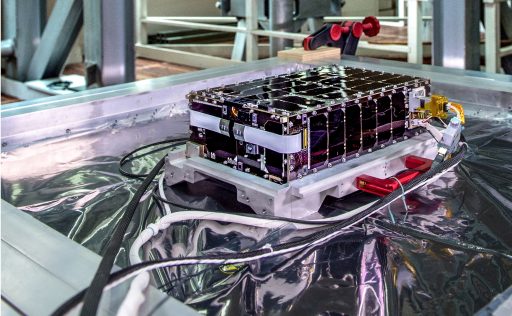
The device comprises front and back plates, flaps and springs with the back plate painted with a highly emissive coating while the flaps are made of much less emissive aluminum. The flaps automatically open when the satellite reaches a certain temperature by bi-metallic springs that cause the flaps to open as they warm and revert back to their original shape when cooling down, closing the louver. For the Dellingr mission, only one spring and flap is part of the system, outfitted with sensors to validate the system’s behavior in an operational environment.
DANDY – the Diminutive Assembly for NanoSatellite Deployables – is a new device for unfurling elements on small satellites. It is designed to hold antennas, booms and sunshades in place during a satellite’s launch and release into orbit and, upon command, applies current to a heating element which weakens a plastic device holding the retaining pins of the deployable structure. On Dellingr, DANDY is employed for the UHF antenna and the magnetometer boom which will be commanded to open at a pre-set time after deployment.
